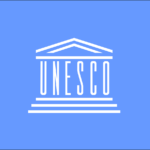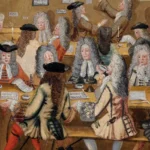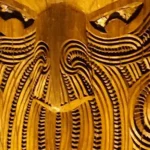Open scholarship is a loose umbrella term for the broad and growing interest in providing more openness and transparency to the research process and its outputs. While discussions of open in the early years of the century focused almost exclusively on peer reviewed journal literature, primarily in the sciences, there is now considerable interest in developing more openness across the entire life cycle of scholarship.
This interest has been driven by a belief that more openness and more transparency will increase the benefits of scholarship to all of society. Openness helps build trust, and the ability to more rapidly share the results of scholarship globally may increase cooperation and the speed with which new knowledge can be put to use to find solutions to the most challenging problems facing humanity.
However, discussions concerning the desirability of any approach to open can run aground when the participants in the discussion don’t have a shared understanding of how the terms in the discussion are being defined. Globally, approaches to open may vary considerably, affected by economics, infrastructure, history and politics.
While the word “open” has become ubiquitous in discussions around providing greater access to scholarship, there is no generally accepted definition of the term that is applicable in all cases. In this OSI brief, we touch on the many ways in which terms under the open scholarship umbrella are used, and recommend a framework that may be helpful in assessing and comparing states of open. The brief links to a number of important documents and organizations that define types of open as well as identifying some of the key influencers that can play a role in effectively advancing policies to increase openness and transparency.
Open access
Open access (OA) is generally understood to apply primarily to peer reviewed journal literature:
- Perhaps the earliest, and most specific, definition was developed by the Budapest Open Access Initiative (see BOAI website). In practice, BOAI open means online materials are free to access, immediate (no embargo period), and have no restrictions on reuse. Retroactively, the Creative Commons CC-BY license is generally considered to be functionally equivalent to the BOAI definition.
- “Gratis” and “libre” are frequently used to distinguish forms of open access, with gratis OA referring to the elimination of price barriers alone and libre OA indicating the removal of price barriers as well as at least some restrictions on re-use (Suber 2008).
- Green vs. gold publishing models: Although there are additional variations within these categories, they represent the two major mechanisms for making articles openly available. Green refers to the practice of making available a digital version of the article—usually, but not exclusively, the final author’s accepted manuscript (AAM) rather than the final, publisher-prepared version of record (VoR) in an institutional or disciplinary repository and made available (usually, but not exclusively), after an embargo period following the publication of the VoR. Gold refers to the availability of the publisher prepared VoR (usually, but not exclusively) at the time of publication, funded by article publication charges (APCs), subsidies or in-kind contributions from institutions, grants and subsidies from foundations and government agencies, or other mechanisms. The key difference is in the business models: Gold funds publication directly, whereas green relies on the traditional subscription model to support peer review and publication of the VoR. Articles made available through either mechanism do not necessarily meet the BOAI definition. There is considerable debate over which of these methods of making articles open is preferable. Other terms, such as platinum and bronze, are also sometimes used to represent different hybrid states of open.
- The term “public access” has come to be associated with (principally US) government mandates to make versions of articles reporting the results of publicly funded research openly available. Depending on circumstances these articles may be green or gold, AAM or VoR. The US National Institutes of Health (NIH) public access policy serves as a model for policies of this type (NIH 2014). Public access is usually distinguished from open access in that the documents are free to read, download, and share, but may still be under other typical copyright restrictions (notably on the creation of derivative works).
- In day-to-day discussions, many times open means only “free to read” — perhaps through a gratis copy on the publisher platform (recently termed “bronze OA”; see Piowar et al. 2018).
Other uses of “open”
Increasingly, discussions around open display the growing interest in exploring avenues for making other scholarly inputs, processes and outputs more openly available:
- Open data: Making the data underlying scientific articles publicly available
- Open educational resources (OER): Developing freely accessible materials that can replace traditional purchased textbooks
- Open citations: Making citations freely available without requiring access to the article or book to which they are attached
- Open scholarly infrastructure: Systems that support the entire workflow of scholarship in a transparent framework
- Open peer review: Processes in which authors and reviewers are known to each other and the contents of the reviews may be available to readers
- Open source software/code: Software that may be downloaded and implemented without paying for a license.
All of these areas interconnect as parts of the overall scholarly research structure and process. While each area has unique characteristics, they all share similar opportunities and challenges. Addressing any one of them inevitably results in affecting the others.
The open spectrum
The report from the “What Is Open?” workgroup of the 2016 meeting of the Open Scholarship Initiative describes these variations as occurring along a spectrum or as a multitude of dimensions, which can be described using the DART framework (discoverable, accessible, reusable, transparent; see OSI 2016). (Although developed independently, the DART framework is similar to the FAIR guiding principles developed by Force11 to guide data producers and publishers; see Wilkinson 2016). The DART framework recognizes “that openness has a number of dimensions and can be conceptualized as a spectrum, rather than at a single defined point.” It identifies “a baseline set of attributes that constitute what the scholarly community currently views as being the minimum requirements for ‘open.’”
In 2017, OSI’s Standards, Norms and Best Practices workgroup report added sustainability to the framework and emphasized that the DARTS framework can be applied to more scholarly outputs than just peer reviewed articles (see OSI 2017) The DARTS open spectrum uses the term “open” in order to avoid confusion with existing definitions of open access, better understand the full range of open products, and allow for recognizing OA as a specific point or range on a spectrum.
Table 1: The DARTS Framework
| Dimension | Attributes include | Description |
| Discoverable |
|
This may be the most fundamental baseline condition of open (meaning that if an object is not discoverable, it is not open). However, there is a wide range here, including open with bad metadata or links and no or faulty identifiers. Use of expert curation is a best practice in ensuring discoverability. |
| Accessible |
|
Generally drives whether we currently consider something to be open, although many variations exist (taking into account embargoes and other conditions). |
| Reusable |
|
Openness is advanced by having fewer restrictions on reuse, dissemination and modification. |
| Transparent |
|
Serves the research lifecycle, given that outputs of research become inputs. Some of the factors that affect transparency include the software used, inclusion of data, the transparency of the peer review process and analytical methods, and more. |
| Sustainable |
|
Financial sustainability is essential for medium and long-term use. Consideration must be given to the method by which content will be hosted and curated and services be supported. Sustainability plans might rely on existing funding sources (e.g., government, foundation, or NGO support) but without incurring an increase in such reliance (or ideally with a decrease in such reliance). Alternatively, sustainability could be achieved with a reasonable business plan. |
Source: OSI 2016 and OSI 2017.
Figure 1: The DARTS open spectrum
Source: OSI 2016 and OSI 2017.
WORK THAT NEEDS TO BE DONE
Research required
This brief touches on some of the variations in terms addressing open scholarship. More detailed work needs to be done. For example:
- Systematic review focusing on the different ways in which the terms open, open access, open data, etc., are used, as a basis for developing a shared glossary or standardized terminology that different initiatives can refer to. There is still considerable variation in how these terms are used.
- What are the connections and interdependencies among open access, open data, open education, open source code, and other open efforts? There is much commonality here. It would be useful to further develop and articulate a detailed vision for open science and open research based on the intersection of all of these.
Opportunities for collaboration
With so many organizations operating in the scholarly communication space, developing alliances is an important tactic for advancing. OSI is interested in sharing expertise and developing collaborative projects to improve our understanding and use of the terminology around open.
- NISO (National Information Standards Organization): Standardizing the terminology around open is well suited to the work that NISO does. An example is the NISO recommended practice on journal article versions from 2008 (see NISO 2008).
- Universities: Piloting the DARTS approach will be important, and universities can help test how this concept is received by researchers and what specific measures (modifications, clarifications, templates, etc.) may be needed to implement this approach in practice.
- Center for Open Science (COS), FORCE11, and others: To the extent that the DARTS framework overlaps with FAIR, we can work to merge these two concepts and/or get behind the one with the best chance of success.
ORGANIZATIONS AND EFFORTS FOCUSING ON THIS ISSUE
In the somewhat fragmented environment of people working on improvements to scholarly communication, for any particular facet there are going to be a number of entities working on the issue. It is important to keep track of what these groups are doing in order to identify overlaps and areas of synergy and/or conflict. When discussing definitions of open, several of the prominent players operate with their own specific definitions that may vary more or less from others. These links go to the sections of the organizations’ websites that specifically address their definition of open.
- BOAI – Budapest Open Access Initiative
- SPARC – Scholarly Publishing and Academic Resources Coalition — articles; data
- DOAJ – Directory of Open Access Journals
- OASPA – Open Access Scholarly Publishers Association
- OA2020 – (global alliance committed to accelerating the transition to open access)
- SciELO – Scientific Electronic Library Online
- African Open Science Platform
- AJOL – African Journals Online
When it comes to actually implementing recommendations or changes, it is essential to identify the organizations that have the authority to determine policy affecting particular facets of the ecosystem.
- National and supranational organizations (e.g., UNESCO, WHO, WIPO, European Commission, US Congress, US Office of Science & Technology Policy, etc.): UNESCO has partnered in the development and funding of OSI and is prepared to stand behind OSI’s recommendations and help unite others behind any new global policies that emerge from this effort.
- Funding agencies (e.g., Global Research Council, National Institutes of Health, National Science Foundation, UK Research and Innovation, Wellcome Trust, Bill & Melinda Gates Foundation, Andrew W. Mellon Foundation, European Research Council, etc.)
REFERENCES & RESOURCES
OSI reports
Discussion of what constitutes open occurred throughout many of the workgroup discussions, but the following reports are particularly key and detail the thinking behind the DARTS framework:
- OSI. 2016. Report from the “What Is Open?” Workgroup. Open Scholarship Initiative.
- OSI. 2016. Report from the Open Impacts Workgroup. Open Scholarship Initiative.
- OSI. 2017. Report from the Standards, Norms and Best Practices Workgroup. Open Scholarship Initiative.
- OSI. 2017. Report from the Open IP Workgroup. Open Scholarship Initiative.
OSI briefs
The following OSI briefs provide additional information on this topic.
- Hampson, G. 2018. OSI Issue Brief 2: How fast is open growing? Open Scholarship Initiative.
Other key resources
The literature on open access is voluminous. Much of it is advocacy, either for or against specific avenues for providing more open. For purposes of this OSI brief, we are mostly concerned with attempts to describe or define open. These articles, while not a comprehensive bibliography, are a useful sample for examining how the terms are used:
-
- Budapest Open Access Initiative (BOAI) website
- Chan, L. 2018 (May). Open Access in the Global South: Perspectives from the Open and Collaborative Science in Development Network. Zenodo. doi.org/10.5281/zenodo.1240505
- Hardwicke, TE, MB Mathur, KE MacDonald, G Nilsonne, GC Banks, M Kidwell, MC Frank, et al. 2018. Data availability, reusability, and analytic reproducibility: Evaluating the impact of a mandatory open data policy at the journal Cognition. BITSS, 15 Aug. 2018. Web. doi.org/10.1098/rsos.180448
- Herb, U, and J Schöpfel. 2018. Open Divide Emerges as Open Access Unfolds. In Open Divide? Critical Studies on Open Access (pp. 7–13). Sacramento, USA: Litwin Books. doi.org/10.5281/zenodo.1206390
- Kidwell, MC, LB Lazarević, E Baranski, TE Hardwicke, S Piechowski, et al. 2016. Badges to Acknowledge Open Practices: A Simple, Low-Cost, Effective Method for Increasing Transparency. PLOS Biology 14(5): e1002456. doi.org/10.1371/journal.pbio.1002456
- Kittrie, E. 2017. National Academies Launch New Study on Moving “Toward an Open Science Enterprise.” DataScience@NIH, 3 Aug 2017.
- Knöchelmann, M. 2018. Reasoning and Interest: Clustering Open Access. Lepublikateur. June 4, 2018.
- Montgomery, L and X Ren. 2018. Understanding Open Knowledge in China: A Chinese Approach to Openness? Cultural Science Journal, 10(1), pp.17–26. doi.org/10.5334/csci.106.
- National Institutes of Health (NIH). 2014 (last update). Public Access Policy.
- NISO/ALPSP Journal Article Versions (JAV) Technical Working Group. 2008. Journal Article Versions (JAV): Recommendations of the NISO/ALPSP JAV Technical Working Group. National Information Standards Organization (NISO), NISO-RP-8-2008.
- Piwowar, H, J Priem, V Larivière, JP Alperin, L Matthias, B Norlander, A Farley, J West, and S Haustein. 2018. The state of OA: a large-scale analysis of the prevalence and impact of Open Access articles. PeerJ 6:e4375
- Serghiou, S, and JPA Ioannidis. 2018. Altmetric Scores, Citations, and Publication of Studies Posted as Preprints. JAMA, 319(4):402–404. doi.org/10.1001/jama.2017.21168
- SPARC. 2014. How Open Is It?. Scholarly Publishing and Academic Resources Coalition.
- Suber, P. 2008 (Aug). Gratis and Libre Open Access. SPARC Open Access Newsletter.
- Tennant, JP, F Waldner, DC Jacques, P Masuzzo, LB Collister, and CH Hartgerink. 2016. The academic, economic and societal impacts of Open Access: an evidence-based review. F1000Research, 5, 632. doi.org/10.12688/f1000research.8460.3
- Tenant, JP and R Mounce. Open research glossary. Accessed online Dec 7, 2018.
- Vicente-Saez, R, and C Martinez-Fuentes. 2018. Open Science now: A systematic literature review for an integrated definition. Journal of Business Research, 88:428-436. doi.org/10.1016/j.jbusres.2017.12.043
- Wilkinson, R, M Dumonier, IJ Aalbersberg, G Appleton, et al. 2016. The FAIR Guiding Principles for scientific data management and stewardship. Scientific Data. doi.org/10.1038/sdata.2016.18










